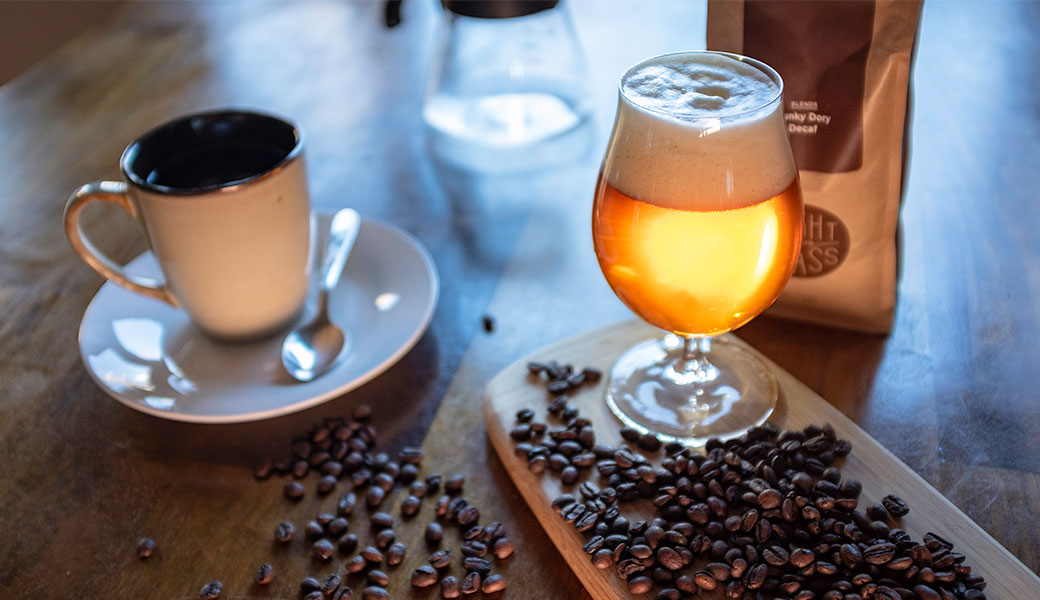
Making a quality cup of cold brew coffee is a skill every homebrewer should have in their arsenal of DIY tricks. But it isn’t as simple as refrigerating a pot of hot-brewed joe.
Cold brew coffee is not only great for making the best cup of iced coffee you’ll ever have, but it’s also the best way to add coffee to your next homebrew.
How to Cold Brew Coffee
We reached out to our neighborhood baristas at a local Boulder, Colorado-based espresso cafe. Cold brew coffee is among their best sellers, and they’ve taken the coffee/beer relationship to the next level by serving toddy coffee from a nitro keg. The result is an extremely smooth, almost milk-like cold coffee (no ice!). Add a splash of chocolate milk or cream before filling it up, and you’ll never look at your morning cup of burnt, cold coffee the same way.
So what’s the trick to making great cold brew coffee?
How to Make Cold Brew Coffee
What You’ll Need
- Large container with seal-able lid
- Strainer: muslin sack, cheesecloth or (clean) pantyhose will work
- Storage container with seal-able lid
- Coarse ground coffee (dark roast)
- Filtered water
The Ratios
Cold brew coffee brewers will use anywhere from 1-2 ounces of coffee beans per cup of water.
The Process
- Grind the beans until coarse. Some coffee grinders have settings for coarse grind, or you can “pulse” the grinder.
- Place ground coffee beans in a container large enough to fit the coffee and water. A pitcher, tupperware, mason jar, etc, work well.
- Using the ratio guidelines above, add the appropriate amount of filtered water and stir the mixture to make sure all the beans are saturated.
- Seal the lid and place in the fridge for 12-24 hours.
- After 12-24 hours, strain the coffee through cheesecloth or something similar into the storage container to remove the coffee grounds. This process can be repeated as needed.
- Store the coffee in a sealed storage container for up to a few days.
When brewing coffee with hot water, you extract not only the flavors of the coffee beans but also astringent and bitter qualities that can come across as burnt characteristics. In hot coffee, this can be pleasant, but when it is chilled and served on ice, the burnt qualities can overpower a lot of the coffee’s delicious nuances.
Instead, cold brew coffee is made by steeping coarse-ground, dark-roasted coffee beans in cold water for 12-24 hours, then straining until free of sediment. The process requires a higher ratio of coffee to water than you would need when brewing hot coffee, but it is well worth it. You will be amazed at the flavors and aromas you get from a cup of cold brew coffee compared to the same beans being hot brewed and then chilled. It’s a worthwhile experiment in itself.
Adding Coffee to Beer
So now you’re sipping on a quality cup of flavorful, cold brew coffee asking yourself, “but what does this have to do with homebrewing?”
Coffee beers continue to grow in popularity, and the beans are no longer only being used to compliment robust, malty styles like stout, porter, and brown ales. Beer brewers are adding coffee to everything from light hybrid beers and hoppy pale ales to Belgian Dubbels and even mead!
Some brewers add brewed coffee to the boil, others just before packaging and the rest somewhere in between. No matter what the stage, if using hot-brewed coffee, especially in subtle styles, burnt qualities can overpower the flavors of the beer, while the astringency can create the illusion of poor-quality hop bitterness. That’s where cold brew comes in.
With the burnt and bitter qualities at bay in toddy coffee, the flavors of your preferred coffee beans can actually be added to beer in detectable quantities while still allowing the beer’s characteristics to be perceivable. It is recommended to add cold brew coffee after fermentation, either in secondary or prior to bottling/kegging. This allows the coffee to be added incrementally to taste to achieve your favored balance. Simply pull a sample and start adding measured amounts of cold brew, and once you hit the perfect balance use that ratio to add the correct amount of coffee to your fermenter or keg and then rack the beer to get an even mixture.
More concentrated cold brew coffee can be made by using less water in the steeping process in order to add as little water to the finished beer as possible. This isn’t always needed but is a great way to prevent the “watered-down beer” quality. Of course, you can always add a bit more malt to the mash to compensate for the anticipated additional water content.
So get creative! Ask yourself what beer style could benefit from coffee beans with acidic fruit notes or a roast with lots of chocolate and spice. In the meantime, cold brew your next batch of coffee to see what you’re missing out on.
For more information on brewing with cold brewed coffee, see “Making Great Coffee Beer” by Nathan Watkins in the September/October 2012 Zymurgy magazine.




Share Post